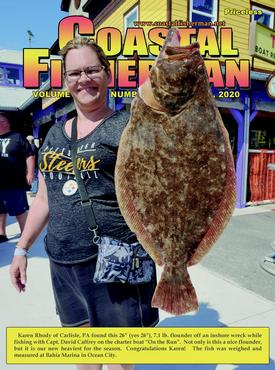


Article by Capt. Steve Katz
 Under Control
Under Control
Have you ever watched the large sportfish boats back into their slip at the marina? Many of them charge backwards and at the last-minute shift to forward to stop the boat- the only brakes they have! This precise movement would not be possible without the precision control of the engines and transmissions (gear). The levers on the helm are connected to the engine control system below decks. There are many variations to an engine control system, some pure mechanical with push-pull cables from top down, some are a mix of electronic control systems with short push cables only in the engine room and some are fully electronics “fly by wire”. These systems and options are not only for large sportfish but also similar in use with most pleasure boats including outboard powered boats.
Cable Systems
The most popular time-tested engine controls system is the push-pull cable system, this system uses a stiff mechanical cable housed inside a plastic-coated metal or nylon jacket. When the captain moves the lever at the helm, the cable reproduces the same cable movement at the engine and or marine gear. The Morse control was one of the original pleasure boat engine controls systems, invented by John Morse after world WWII. A patent for a control system developed for his own boat would spawn 35 other Morse patents, all relating to single-lever controls for marine engines. The single-lever control was inspired by Morse’s experience with airplanes, which replaced two separate levers for throttle and direction. The single-lever control did for boating what automatic transmission did for cars, greatly simplifying operation of a boat into the fore and aft movement of a single lever.
These push pull cables and control levers cables are now produced by a handful of companies, often retaining the original 33C designation for the most popular cable size used in pleasure boats.
Electronic Engine Controls
There are a few variations of “electronic” engine controls, some are pure electronic with no moving cables, and some are a hybrid – a mix of mechanical and electronics. Hybrid system- This style of electronic engine control uses electronics for most of the system and only the final few feet contain the traditional cables.
The advantage to this system is that you have electronic levers at the helm (or helms) that send a signal along a small wire to a processor in the engine room area that does the heavy work of pushing and pulling the cables. These systems allow for many options and variations that are not available with a purely mechanical system, including a handheld remote! This system also eliminates long cable runs, giving the captain precise feel and low effort at the control levers at the helm.
Full Electronic Controls
Most modern engines and transmissions are fully electronic and rely on electrical wires to supply a signal with instructions. This goes for the large sportfish and now most all new outboard engines. A control lever at the helm sends an electronic signal all the way to the engine, without the use of push pull cables. As you can imagine, there are a lot of different configurations since each engine and transmission make and model may require a different input signal. Most aftermarket control system can be programmed to match the powertrain combination. When it comes to modern outboard engines, all of the manufactures offer their own electronic engine control system specific to the connected engine. When it comes to inboard engines in sportfish boats or similar larger pleasure boats, there are a few systems specific to the engine manufacturer but often one of the two popular aftermarket systems are found on sportfish boats.
Aftermarket Electronic Engine Controls
The most popular independent electronics engine controls are the Glendinning system and the ZF (formerly Mathers) systems. Both of these brands can be customized to meet the needs of a hybrid system with push pull cables or a fully electronic system. Interestingly, both the Glendinning and Mathers (now ZF) companies grew from a vision from an inventive founder based on the needs of a better way to control marine engines. Hylands “Glen” Glendinning, with the help of his family, designed and sold the first automatic engine Synchronizer in 1972 and grew his business into a multi-industry controls system, still operated by his family today. Mathers Controls began in the family basement of Harold Mathers in 1951. The company quickly became an industry leader providing high quality propulsion control systems for both commercial and pleasure craft applications, leading up the 1987 introduction of the Mathers MicroCommander, the industry’s first electronic propulsion control system. Other electronic engine control brands include Aventics (formerly Bosch Rexroth), Sturdy, Seastar, Uflex, Kobelt and others.
A good engine control system, kept in top condition, can make you look like a pro when handling your boat. Old stiff cables and clunky shifters will put fear into even the most experienced captains. Learning about your engine control system and keeping it in top operation condition will keep you in control!